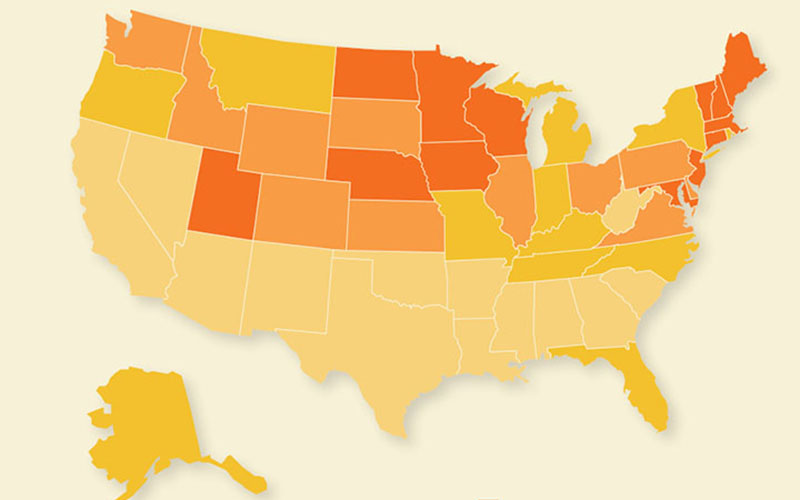WASHINGTON – Despite making progress in most areas, Arizona remained mired at 46th among states for overall child well-being in the 2015 KidsCount report by the Annie E. Casey Foundation.
The report said Arizona improved in 11 of 16 indicators it uses to measure child well-being, including standardized test scores, teen birth rate and all four health criteria: low-birthweight babies, teen deaths, substance-abuse rates and children without health insurance.
But those marginal improvements were not enough to keep pace with gains in other states, or to offset areas where Arizona dropped.
The KidsCount count
The Annie E. Casey Foundation’s KidsCount report compiles reams of data to generate 16 measures of the overall well-being of children in a state. Despite improvements in most areas, Arizona finished in 46th place overall for a second year. The state’s ranking by category, this year and last year:
Economic well-being
Education
Health
Family and community
Arizona has “been at the bottom of this list most of the years this report has come out,” said Josh Oehler of the Arizona Children’s Action Alliance, which collaborated with the Casey Foundation on the state’s portion of the report. While Oehler said he was disappointed with the state’s numbers, he said advocates were encouraged by areas where Arizona is making progress.
The state made a remarkable jump in its ranking on teen substance abuse, for example, going from 45th to 17th place, as the number of teens abusing drugs or alcohol fell from 9 percent in the benchmark year of 2007-2008 to 6 percent five years later, the numbers used for this year’s report.
And the number of teen births fell sharply, from 54 per 1,000 teen girls in 2009 to 33 per 1,000 in 2013 – but that was not good enough to keep Arizona from slipping from 39th to 40th in that category.
One advocate attributed the state’s continued poor showing to the weak economy after the recession and a lack of state funding set aside for children. Arizona ranked 48th in the country for its percentage of children living in high-poverty areas, with 24 percent living in poverty, 10 percentage points higher than the national average.
“Unfortunately, it’s not a surprise,” said Cynthia Zwick, executive director of the Arizona Community Action Association. “Incredibly disappointing but not surprising.
She blamed “spending cuts at the state level and the overall state of jobs in terms of a recovery” in the state.
“It’s tough to sustain a family on a minimum wage, and 24 percent of Arizonans are employed in low-wage jobs,” Zwick said.
Another area where Arizona is struggling is in the number of children without health insurance. When KidsCare, the state’s health care program for children, was frozen in 2010 it left many children without coverage.
“We’re the only state in the country without a state-assisted health insurance program. Because KidsCare has been eliminated in Arizona, no new kids can get on the children’s health care program,” Oehler said.
Education was another crucial piece of the puzzle in terms of improving well-being for children in the state. One expert felt that the state’s failure to fund schools at a level that would allow more seats for more students, and to hire and retain teachers, was a key reason Arizona has struggled in reading and math scores across the board.
The KidsCount report said 72 percent of fourth graders in Arizona scored below the proficient-reading level – 41st in the country – and 69 percent of eighth graders in the state were less than proficient, 35th in the nation.
“The number one thing we heard from Arizonans from across the state is that we need more funding for education. It’s not the only solution but it’s a crucial piece of the puzzle,” said Charles Tack, a spokesman for the Arizona Department of Education.
Tack also felt that ensuring that students are placed in the right grade level by evaluating them more accurately was important. He said officials hope the AZMerit test that was administered this spring “is more effective at evaluating students’ preparedness and proficiency to move on to the next grade.”
One area for hope is in preschool attendance. Although 67 percent of children ages 3 to 4 in the state do not attend preschool – 48th in the nation – a recent $20 million grant from the federal government is expected to turn the tide for Arizona’s youngest students.
“The preschool programs from the federal grant start this fall and are a big opportunity to get more students and to increase the number of seats available overall for a high-quality education,” Tack said. “We’re really excited for that.”
